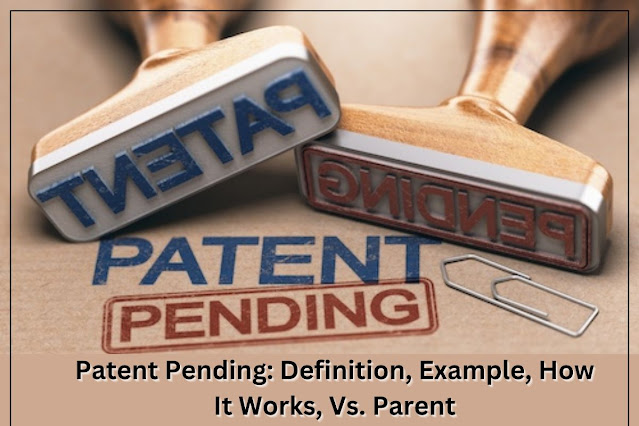From Concept to Patent: Protecting Your Intellectual Property
In
the modern world, where innovation drives progress, safeguarding your
intellectual property (IP) has never been more crucial. Patenting an idea is a robust method to protect your unique concept from
being used without your permission. This blog will guide you through the
essential steps of turning your concept into a patent and protecting your
intellectual property.
Understanding Patents
A
patent is a legal document granted by the government, giving an inventor
exclusive rights to their invention for a specified period, typically 20 years.
This means you have the right to exclude others from making, using, selling, or
distributing your invention without your consent. There are three main types of
patents:
- Utility Patents: These cover new and useful inventions or discoveries,
such as processes, machines, or compositions of matter.
- Design Patents: These protect the unique visual qualities or design of
a manufactured item.
- Plant Patents: These are granted for new and distinct plant varieties
reproduced asexually.
The Importance of Patenting Your Idea
Patenting
your idea offers several benefits:
- Protection: It prevents others from using, making, or selling your
invention without your permission.
- Market Advantage: It provides a competitive edge by granting you a
monopoly over your invention.
- Revenue Opportunities: You can license or sell your patent, creating
additional income streams.
- Investor Appeal: A patent can make your business more attractive to
investors and partners.
Steps to Patent an Idea
1. Document Your Invention
The
first step in the patent process is to thoroughly document your invention. Keep detailed
records of how you came up with the idea, the development process, and any
modifications you made along the way. Include sketches, diagrams, and
descriptions of how your invention works. This documentation will be crucial
when filing your patent application.
2. Conduct a Patent Search
Before
you invest time and money into the patent process, it’s essential to ensure
that your idea is unique. Conduct a thorough patent search to see if similar inventions
already exist. You can do this through online databases like the United States
Patent and Trademark Office (USPTO) or hire a professional patent attorney to
perform the search for you.
3. Determine the Type of Patent
Identify
the type of patent that best suits your invention: utility, design, or plant.
Each type has specific requirements and application processes, so understanding
which category your invention falls into is crucial.
4. Prepare and File a Patent Application
Preparing
a patent application is a complex task that requires attention to detail. Here
are the components of a typical patent application:
- Title: A clear and concise title of your invention.
- Abstract: A brief summary of your invention.
- Background: An explanation of the problem your invention addresses
and any prior art.
- Detailed Description: A thorough description of your invention, including
how it works and how it can be used.
- Claims: The legal definition of your invention, outlining the
scope of protection you seek.
- Drawings: Illustrations that complement the description of your
invention.
Given
the complexity of this process, it’s advisable to hire a patent attorney or
agent to help prepare and file your application. They can ensure that your
application meets all legal requirements and increases the chances of approval.
5. Provisional vs. Non-Provisional Patent Applications
You
have the option to file a provisional or non-provisional patent application:
- Provisional Patent Application: This is a preliminary step that establishes an early
filing date but doesn’t mature into an issued patent unless you file a
non-provisional application within 12 months. It’s less expensive and
allows you to claim “patent pending” status.
- Non-Provisional Patent
Application: This is the formal application
required for the patent examination process. It must include all the
necessary documentation and claims.
6. Patent Examination Process
Once
your non-provisional application is filed, it enters the examination phase. A
patent examiner reviews your application to ensure it meets all legal
requirements and that your invention is new, useful, and non-obvious. This
process can take several years and may involve multiple rounds of communication
with the examiner.
7. Respond to Office Actions
During
the examination, the patent office may issue office actions requesting
additional information or clarifications. Respond promptly and thoroughly to
these requests. Your patent attorney can assist in crafting effective responses
to address the examiner’s concerns.
8. Patent Issuance
If
the patent office is satisfied with your application, your patent will be
granted. You will receive a formal patent certificate, and your invention will
be publicly disclosed in the patent database. At this point, you have the exclusive
rights to your invention for the duration of the patent term.
9. Maintain Your Patent
After
your patent is granted, you must maintain it by paying periodic maintenance
fees. Failure to pay these fees can result in the expiration of your patent.
10. Enforce Your Patent Rights
Once
you have a patent, it’s your responsibility to enforce your rights. Monitor the
market for potential infringements and take legal action if necessary to
protect your intellectual property.
Conclusion
Patenting
an idea is a meticulous and often lengthy process, but the rewards of
protecting your intellectual property can be substantial. By following these
steps and you can try patent company like patent services usa,
you can navigate the patent system effectively and secure the exclusive rights
to your innovative ideas. Protecting your intellectual property is an
investment in your future, ensuring that your creativity and hard work are
recognized and rewarded
.jpg)


Comments
Post a Comment